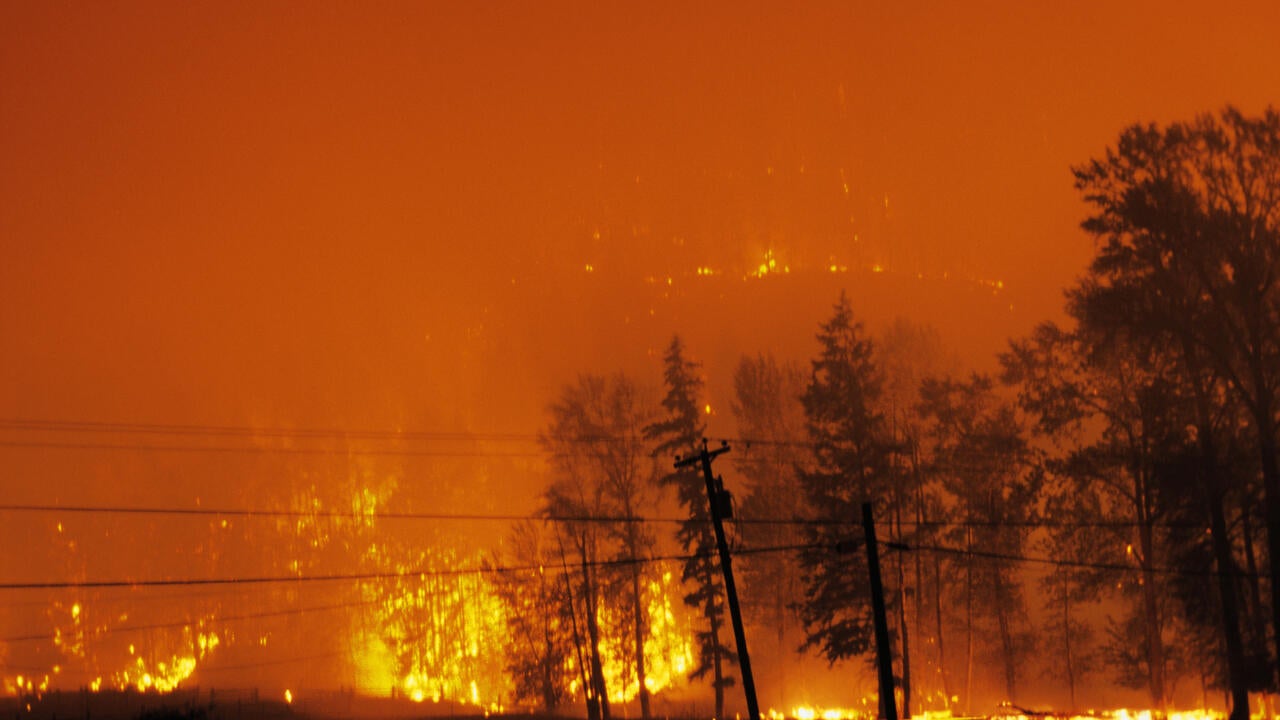
Indigenous fire stewardship promotes global biodiversity
Disruption of Indigenous-controlled fire use has resulted in high-severity fire activity

Disruption of Indigenous-controlled fire use has resulted in high-severity fire activity
By Media RelationsThe disruption of Indigenous-controlled fire use at the onset of colonization has resulted in high-severity fire activity, according to a new study by a research team at the University of Waterloo.
The researchers examined how Indigenous fire stewardship—specifically cultural burning—reduces the risks of interface fires, which have the potential to involve buildings and vegetation simultaneously, and fire impacts to ecological and human communities.
Indigenous fire stewardship is a global practice used for resource management, community protection, and cultural purposes. Importantly, it has increased biodiversity and ecosystem heterogeneity across all of Earth’s major terrestrial biomes.
“Declines in biodiversity were associated with high-severity fire activity, which began with the disruption of Indigenous-controlled fire use at the onset of colonization,” said research co-lead Kira Hoffman, a recent postdoctoral fellow in the Faculty of Environment at the University of Waterloo, now a jointly appointed postdoctoral fellow at the University of British Columbia’s Faculty of Forestry and The Bulkley Valley Research Centre.
“Agency and public support for Indigenous-led fire stewardship, specifically cultural burning can revive important cultural practices while helping protect ecosystems and human communities from increasingly destructive wildfires.”

The study points out that over a century of fire suppression, combined with warmer and drier conditions associated with climate change, has led to increasingly severe wildfire events, which is threatening biodiversity on a global scale.
The team made up of undergraduate and graduate students and postdoctoral fellows in the Trant Ecological Legacies Lab in the School of Environment, Resources and Sustainability (SERS) conducted a review of primary ecological literature published from 1900 to the present, noting 79 per cent of applicable studies reported increases in biodiversity as a result of Indigenous fire stewardship.
“Identifying and implementing human-fire interactions supporting a variety of valuable social and ecological outcomes is becoming increasingly urgent, given what we’re seeing in Western Canada, Manitoba, and Ontario, our forest fire situation that can only go from bad to worse without changes to existing strategies,” said Andrew Trant, Associate Professor in SERS and co-author of the recent publication.
Although evidence for widespread and contemporary Indigenous fire stewardship exists, the millennia-old practice is still debated in many parts of the world. Hoffman said misunderstandings of what cultural burning is, have been driven in part by colonialism, fear of fires becoming out of control, and real versus perceived public perceptions of wildfire risk, which can be in direct opposition to scientific evidence and Indigenous Ecological Knowledge that fire is a necessary and healthy component of functioning ecosystems.
“Importantly, Indigenous-led fire stewardship continues to demonstrate the value of routinely applying controlled fire to adapt to changing environments while promoting desired landscapes, habitats, and species while also supporting subsistence practices, communities and livelihoods,” Hoffman said.
Indigenous peoples comprise only 5 per cent of the world’s population but protect approximately 85 per cent of the world’s biodiversity through stewardship of Indigenous-managed lands. This is partly due to long-term and widespread relationships with and dependence on fire, which has been applied as a tool for managing landscapes for millennia.
The findings of the open-access study co-authored by Hoffman, Emma Davis, Sara Wickham, and Andrew Trant along with other co-authors were published today in the journal, Proceedings of the National Academy of Sciences.

Read more
Here are the people and events behind some of this year’s most compelling Waterloo stories

Read more
Waterloo researchers are helping to make a much-loved holiday tradition more sustainable all year round

Read more
Researchers awarded funding to investigate ecology, climate change, repatriation, health and well-being through cultural and historical lens
The University of Waterloo acknowledges that much of our work takes place on the traditional territory of the Neutral, Anishinaabeg, and Haudenosaunee peoples. Our main campus is situated on the Haldimand Tract, the land granted to the Six Nations that includes six miles on each side of the Grand River. Our active work toward reconciliation takes place across our campuses through research, learning, teaching, and community building, and is co-ordinated within the Office of Indigenous Relations.